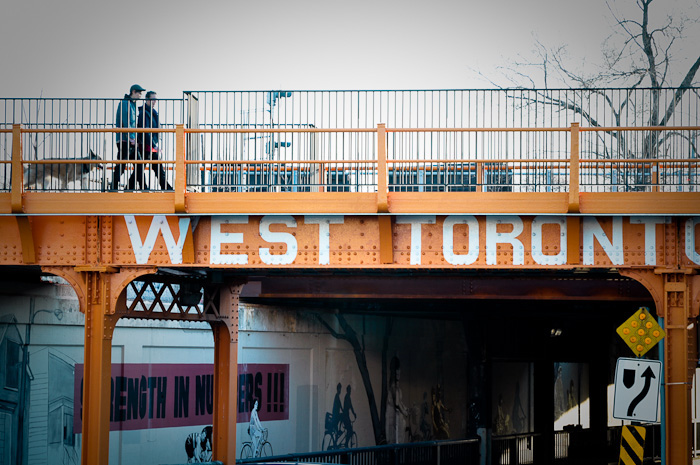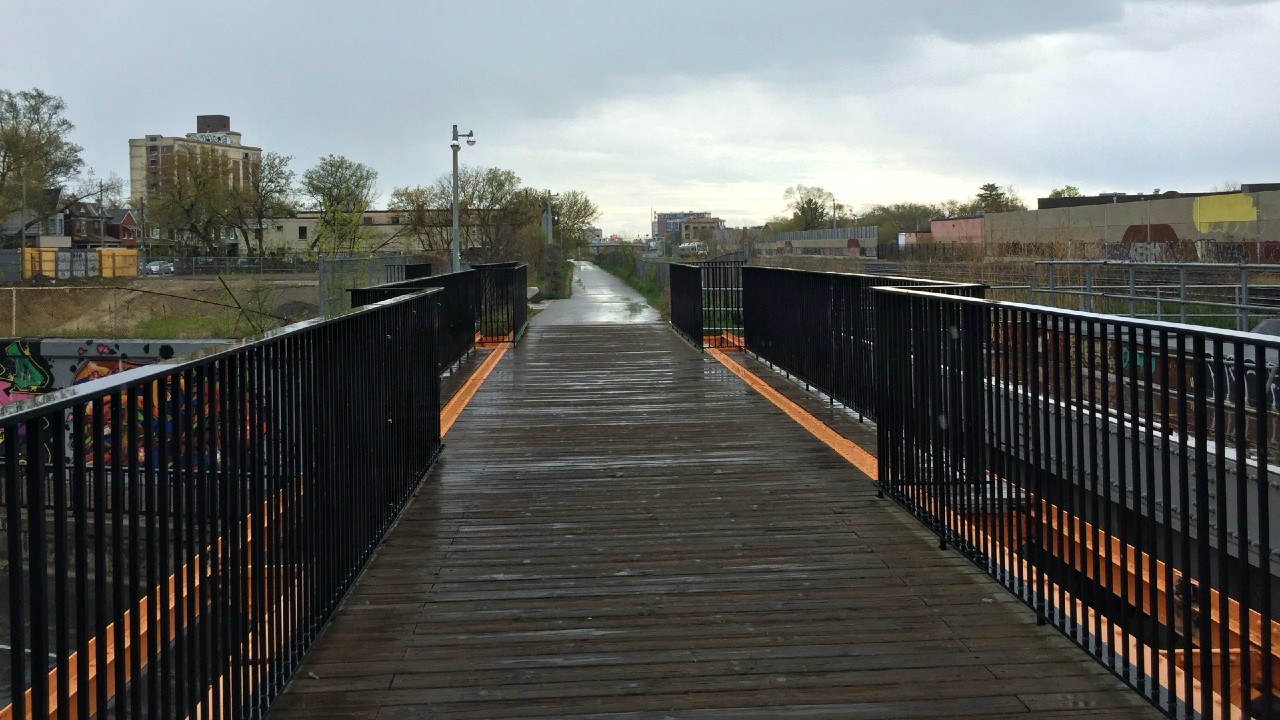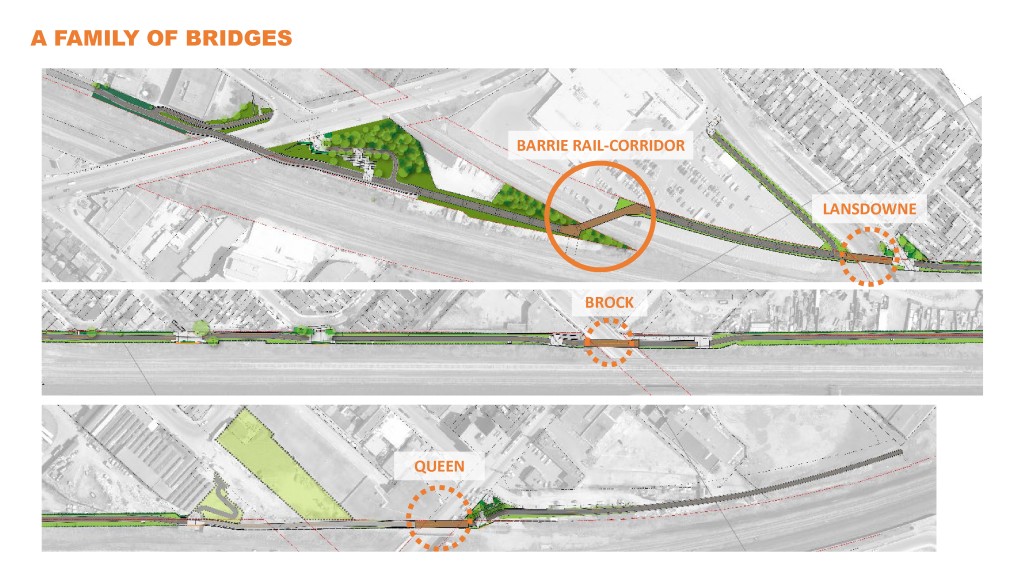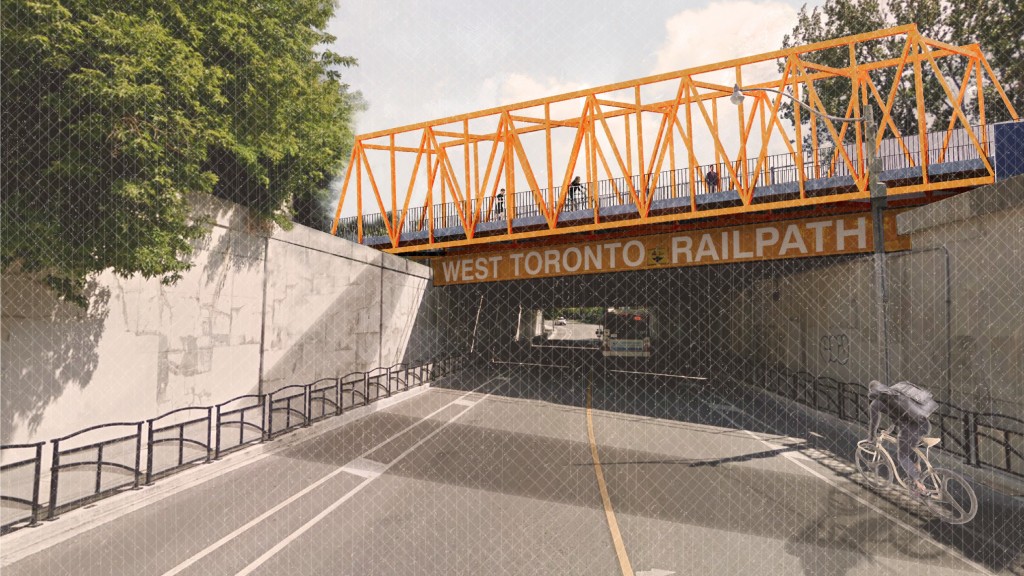Meet the multi-use path that will connect west-end cyclists to the downtown core
The West Toronto Railpath is set to expand. That means big things for city connectivity.

In the west end of the city, the West Toronto Railpath runs alongside the Kitchener rail line, going from Cariboo Ave. in the north down to Dundas St. W. and Sterling Rd. Along the way it crosses freely over major streets at Dupont and Bloor.
Since it opened in 2009, the path has been a popular route for cyclists, joggers, and pedestrians moving alongside the tracks. And talk of its eventual expansion south has long been met with enthusiasm.
“(The) Railpath is something that people want. The project is almost unanimously supported. It’s a pleasure to go to meetings where everyone is saying ‘yes’ to something for a change,” says Scott Dobson, a member of Friends of the West Toronto Railpath, a group committed to expanding and improving the Railpath.
Now, an extension down to Liberty Village is finally happening. A plan was approved in September 2020, and according to Elli Papaioannou, a senior project manager in Cycling and Pedestrian Projects at the City of Toronto, the city is hoping to start work sometime in 2023.
Slated to cost $2.9 million — an amount shared between the City and the federal government — the extension is estimated to take between two and a half and three years to complete.
“Hopefully around 2025, the Railpath extension will be in place,” she says.
And while there is a chunk of the Railpath currently closed due to Metrolinx work on the Kitchener line, construction timelines for the southern extension aren’t expected to be impacted.
Improving connectivity
According to Papaioannou, design and specifications for the extension have been finalized. The next step for the City and Metrolinx is to “secure the necessary lands for construction access and project implementation,” she says, adding “environmental investigations are being carried out in preparation of construction.”
When it arrives, the extension will run from the Railpath’s current southern terminus at Dundas and Sterling down to Liberty Village at Abell and Sudbury, close to the planned King-Liberty SmartTrack GO Station. There, the path will connect to the Douro-Wellington Bikeway, which is now under construction and will allow cyclists to ride right into the downtown core.
“[The expansion] makes the connectivity of the city’s safe cycling network a lot better,” says Ry Shissler, Cycle TO’s communications manager. “If you’re in the west end, you can get to downtown and vice versa, and you can do it without having to ever cross the street.”
According to Papaiouannou, improving connectivity and safety for cyclists and pedestrians is a major factor in city council’s support of the project.
“When [the expansion] was endorsed around 2011 by city council, they understood that the existing Railpath was a really good link and this part of the rail corridor is a good place to put all these (additional) facilities because the infrastructure is already there,” she says.
Plus, the land that the Railpath extension is being built on is either owned by Metrolinx or the city, making it an easy option for development.
While there are bike lanes at the foot of the Railpath on Dundas St. W., bike-lane connectivity to the downtown core from this area is inconsistent. (Check out the map accompanying this article for a look at the entire network.) Plus, many in the city remain reluctant to cycle if it means riding alongside traffic and navigating streetcar tracks.
“This extension is going to remove this great barrier for a lot of people that can’t cycle or walk to get where they want to be,” says Papaiouannou.

Ripple effects
Aside from the Railpath’s role in improving convenience, safety, and connectivity, promoting an active lifestyle is also top of mind for the city.
“The pandemic forced a lot of people out of transit and cars, and it made them want to be outside,” Papaiouannou says, pointing to the popularity of initiatives like ActiveTO (which closed down major Toronto streets to cars to encourage cycling, walking, and running) and cycle track pilot projects that made space for contraflow bike lanes throughout the city. “These policies that aim to get people out of their cars so that we can move for our health, and the health of the environment, are something that we [at the city] all agree that we need to be moving forward towards.”
And, once the Railpath expansion is finished, “there will be calls for more connections to it,” says Dobson, who lists a potential link to the proposed community centre in Sorauren Park as an example.
Shissler, meanwhile, hopes that Railpath support will lead to more biking and walking infrastructure in the city, especially in parts of Toronto where there aren’t as many safe cycling routes.
“In Ward 9 Davenport (where the Railpath is located), lots of people ride bikes and it’s very walkable for the most part, and the infrastructure reflects that,” they say. “But if you look at Scarborough or North York or Etobicoke, there are vast areas where there are no safe places to cycle, except for the occasional path through a park or a small side street.”
Railpath-like developments throughout the city — especially where cars dominate the streets outside the city’s core — are needed, Shissler notes.
“People want to ride their bikes. They want to be able to walk and run and enjoy their city.”
This is an updated version of an article originally published in 2022.
Code and markup by Bridget Walsh & Kyle Duncan. ©Torontoverse, 2023



